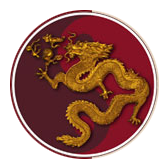Temporomandibular joint dysfunction (TMJD) covers pain and dysfunction of the muscles of mastication and the temporomandibular joints. The most important feature is pain, followed by restricted mandibular movement, and noises from the temporomandibular joints (TMJ) during jaw movement. TMJD is very common, and it can become chronic and difficult to manage.
Signs and symptoms
The symptoms will usually involve more than one of the various components of the masticatory system, muscles, nerves, tendons, ligaments, bones, connective tissue, and/or the teeth.
- Pain and tenderness on palpation in the muscles of mastication, or of the joint itself. Pain is the defining feature of TMJD and is usually aggravated by manipulation or function, such as when chewing, clenching, or yawning, and is often worse upon waking. The character of the pain is usually dull or aching, poorly localized, and intermittent, although it can sometimes be constant. The pain is more usually unilateral (located on one side) rather than bilateral.
- Limited range of mandibular movement, which may cause difficulty eating or even talking. There may be locking of the jaw, or stiffness in the jaw muscles and the joints, especially present upon waking. There may also be incoordination, asymmetry or deviation of mandibular movement.
- Noises from the joint during mandibular movement, which may be intermittent.
Acupuncture Treatment
Acupuncture usually works very well for TMJD. If you have TMJD, you should definitely try acupuncture. If you have any question, please feel free to contact us.


